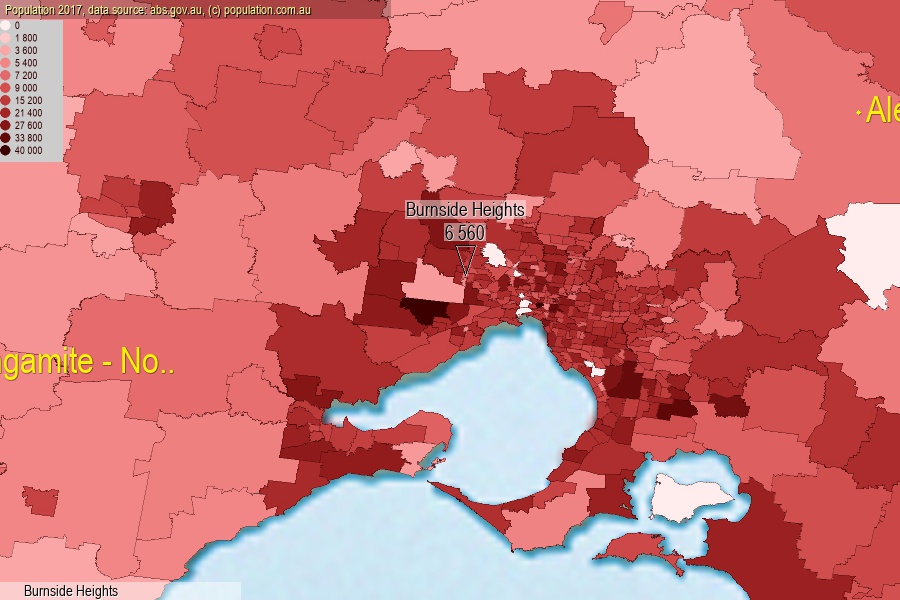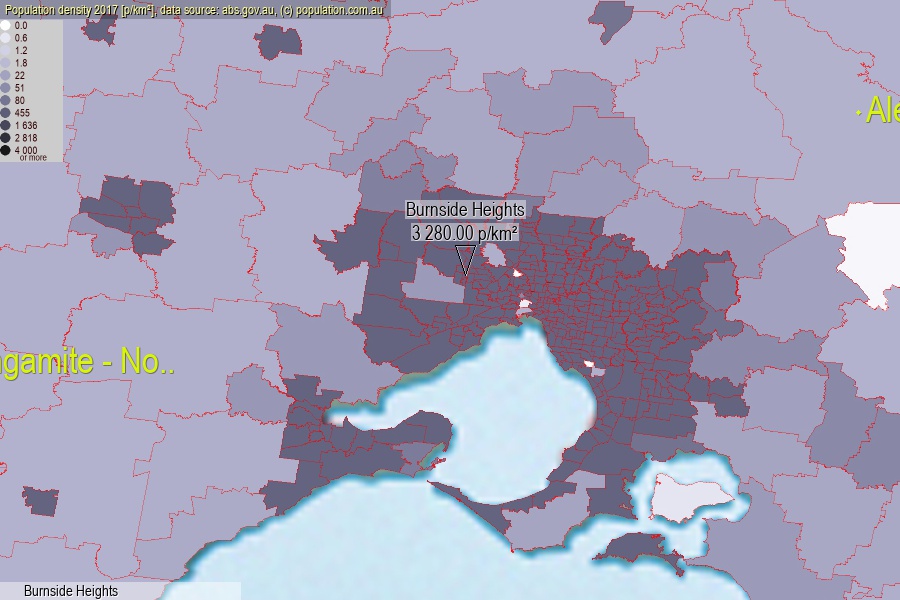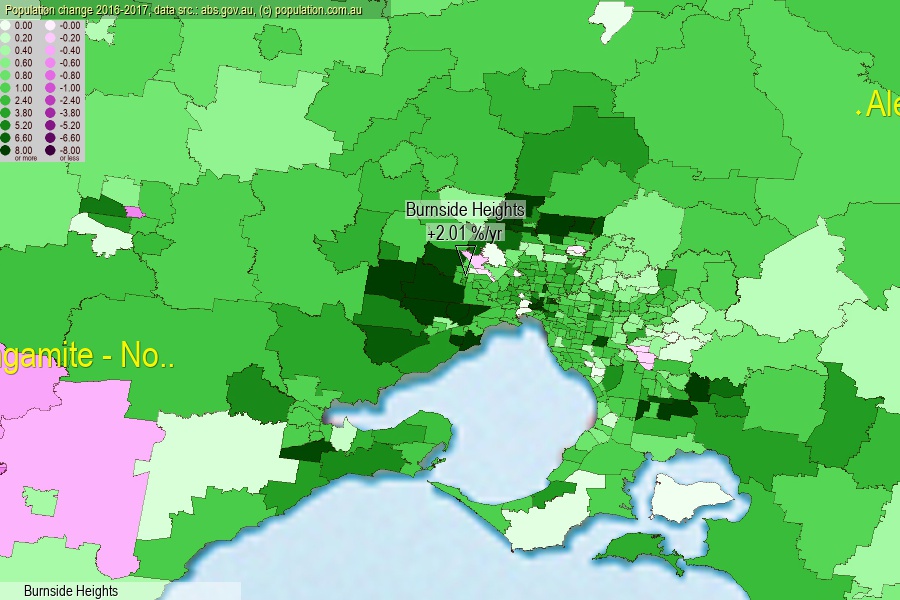 population.com.au
population.com.auLast official estimated population of Burnside Heights (as Statistical Area Level 2) was 6 560 people (on 2017-06-30)[2]. This was 0.03% of total Australian population and 0.102% of VIC population. Area of Burnside Heights is 2.00 km², in this year population density was 3 280.00 p/km² . If population growth rate would be same as in period 2016-2017 (+2.01%/yr), Burnside Heights population in 2025 would be 7 690. [0]



Click to enlarge. Burnside Heights is located in the center of the images.
Population [people], population density [p./km²] and population change [%/year] [2]
View borders » (new window) [4]
[2001-2002] +11.11 %/Yr.
[2002-2003] +60.00 %/Yr.
[2003-2004] +106.25 %/Yr.
[2004-2005] +193.94 %/Yr.
[2005-2006] +85.05 %/Yr.
[2006-2007] +255.43 %/Yr.
[2007-2008] +88.79 %/Yr.
[2008-2009] +51.56 %/Yr.
[2009-2010] +25.88 %/Yr.
[2010-2011] +12.68 %/Yr.
[2011-2012] +7.07 %/Yr.
[2012-2013] +5.48 %/Yr.
[2013-2014] +4.09 %/Yr.
[2014-2015] +2.91 %/Yr.
[2015-2016] +2.65 %/Yr.
[2016-2017] +2.01 %/Yr.
[0] Calculated with linear interpolation from officially estimated population
[1] Read more about SA2 and Australian Statistical Geography Standard (ASGS) on abs.gov.au
[2] Population data from Australian Bureau of Statistics (Population and density: 2017; change: 2016-2017)
[3] Digital Boundaries: Australian Statistical Geography Standard (ASGS) 2016.
[4] Border coordinates are simplifyed using Ramer-Douglas-Peucker algorithm.